EASN Position paper on HORIZON2020
 In view of the next Framework Programme, referred to as "Horizon 2020", the European Aeronautics Science Network formed and published a position paper with respect to the Horizon 2020 Work Programme, as well as one about the Academia involvement in it. Among others, the EASN General Assembly expressed its concern about the extremely low budget available for collaborative research in Aeronautics in the frame of H2020. In this context, EASN Association asks for an increased European budget for research and accordingly for an increased budget for Aeronautics research. Finally, the eminent need for a sufficient participation of Academia in the frame of Horizon 2020 is stressed. For more information download the "EASN position paper on Horizon 2020" and the "EASN position paper on academia involvement in Horizon 2020" here.
In view of the next Framework Programme, referred to as "Horizon 2020", the European Aeronautics Science Network formed and published a position paper with respect to the Horizon 2020 Work Programme, as well as one about the Academia involvement in it. Among others, the EASN General Assembly expressed its concern about the extremely low budget available for collaborative research in Aeronautics in the frame of H2020. In this context, EASN Association asks for an increased European budget for research and accordingly for an increased budget for Aeronautics research. Finally, the eminent need for a sufficient participation of Academia in the frame of Horizon 2020 is stressed. For more information download the "EASN position paper on Horizon 2020" and the "EASN position paper on academia involvement in Horizon 2020" here.
Joint CS2-EASN Workshop
 Clean Sky 2 and EASN Association are organizing a joint Workshop on the participation and role of Academia in Clean Sky 2. The Workshop will be held on the 23rd of January 2014 and will be kindly hosted at the premises of Clean Sky JU in Brussels. More information will be published soon on the EASN website.
Clean Sky 2 and EASN Association are organizing a joint Workshop on the participation and role of Academia in Clean Sky 2. The Workshop will be held on the 23rd of January 2014 and will be kindly hosted at the premises of Clean Sky JU in Brussels. More information will be published soon on the EASN website.
3rd International EASN Workshop on aerostructures
 The 3rd EASN International Workshop on Aerostructures was successfully hosted by Politecnico di Milano from 9th until 11th October 2013. More than 120 participants from Industry, research organizations and Academia attended the Workshop and a total of 90 presentations were performed in 3 parallel sessions. In addition, 36 scientific papers have been published in the Workshop proceedings, some of which will be selected and submitted in scientific journals. Moreover, scientific results from 27 running research projects were presented thus accenting the Workshop as a major European dissemination event for new knowledge and emerging technologies related to aerostructures. Consequently, it is expected that the works presented during the three-day EASN Workshop will have a strong impact on addressing new researches and projects. Furthermore, well known invited speakers updated the delegates about the newest opportunities for carrying out aeronautics related research as well as on applying for European funds. You can donwload the performed presentations from the EASN website.
The 3rd EASN International Workshop on Aerostructures was successfully hosted by Politecnico di Milano from 9th until 11th October 2013. More than 120 participants from Industry, research organizations and Academia attended the Workshop and a total of 90 presentations were performed in 3 parallel sessions. In addition, 36 scientific papers have been published in the Workshop proceedings, some of which will be selected and submitted in scientific journals. Moreover, scientific results from 27 running research projects were presented thus accenting the Workshop as a major European dissemination event for new knowledge and emerging technologies related to aerostructures. Consequently, it is expected that the works presented during the three-day EASN Workshop will have a strong impact on addressing new researches and projects. Furthermore, well known invited speakers updated the delegates about the newest opportunities for carrying out aeronautics related research as well as on applying for European funds. You can donwload the performed presentations from the EASN website.
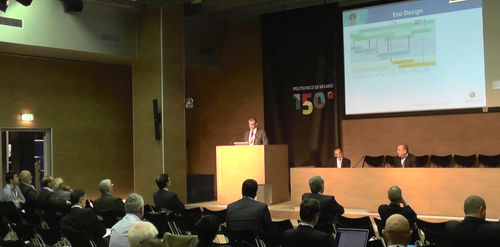
4th International EASN Workshop on Flight Physics and Aircraft Design
 The European Aeronautics Science Network is delighted to announce that the 4th out of a series of annual specialized Workshops, this time in the fields of Flight Physics and Aircraft Design, will be held on October 27-29, 2014 in Aachen, Germany in the premises of RWTH Aachen University. In the frame of EASN Association's knowledge and innovation dissemination activities, this three-day event primarily aims to offer its participants a forum to meet and present among relative audience, the latest advancements in the areas of Flight Physics and Aircraft Design, together with novel and innovative ideas for future research. The 4th EASN Workshop on Flight Physics and Aircraft Design is expected to be, like its predecessors, a major dissemination event for running research projects. Useful information about the Workshop along with registration instructions will be published soon on the EASN website.
The European Aeronautics Science Network is delighted to announce that the 4th out of a series of annual specialized Workshops, this time in the fields of Flight Physics and Aircraft Design, will be held on October 27-29, 2014 in Aachen, Germany in the premises of RWTH Aachen University. In the frame of EASN Association's knowledge and innovation dissemination activities, this three-day event primarily aims to offer its participants a forum to meet and present among relative audience, the latest advancements in the areas of Flight Physics and Aircraft Design, together with novel and innovative ideas for future research. The 4th EASN Workshop on Flight Physics and Aircraft Design is expected to be, like its predecessors, a major dissemination event for running research projects. Useful information about the Workshop along with registration instructions will be published soon on the EASN website.
IMG4, EREA, EASN joint position paper
 IMG4, EREA and EASN have jointly defined and published a number of expectations and recommendations for the Transport theme in the Horizon 2020 Work Programme 2014 and 2015. The main aim is to ensure that within the latter, there is an appropriate response of the aviation sector in terms of R&TD to the societal, environmental and economic challenges. You can download the "H2020 Work Programme 2014-2015 IMG4/EREA/EASN expectations and recommendations" position paper, on the EASN website.
IMG4, EREA and EASN have jointly defined and published a number of expectations and recommendations for the Transport theme in the Horizon 2020 Work Programme 2014 and 2015. The main aim is to ensure that within the latter, there is an appropriate response of the aviation sector in terms of R&TD to the societal, environmental and economic challenges. You can download the "H2020 Work Programme 2014-2015 IMG4/EREA/EASN expectations and recommendations" position paper, on the EASN website.
BoD election
 During the 3rd International EASN Association Workshop on Aerostructures in Milan on 9th-11th October 2013, the new EASN Board of Directors (BoD), which will lead the EASN Association's activities for the forthcoming three years, was elected by the General Assembly. The new BoD of the EASN Association consists of six (6) members and, namely, it is composed by: The EASN President: Prof. Spiros Pantelakis; the Vice President: Prof. Zdobyslaw Goraj; the Secretary General: Dr. Helge Pfeiffer; the Treasurer: Prof. Mario Guagliano; the Scientific Advisory Officer: Prof. Dimitris Drikakis; and the Industrial Advisory Officer: Prof. Eike Stumpf. During its first meeting in Brussels on the 15th of November 2013, the newly elected Board of Directors defined, inter alia, each member's role and responsibilities, as well as the main targets and priorities of the EASN Association for the upcoming period.
During the 3rd International EASN Association Workshop on Aerostructures in Milan on 9th-11th October 2013, the new EASN Board of Directors (BoD), which will lead the EASN Association's activities for the forthcoming three years, was elected by the General Assembly. The new BoD of the EASN Association consists of six (6) members and, namely, it is composed by: The EASN President: Prof. Spiros Pantelakis; the Vice President: Prof. Zdobyslaw Goraj; the Secretary General: Dr. Helge Pfeiffer; the Treasurer: Prof. Mario Guagliano; the Scientific Advisory Officer: Prof. Dimitris Drikakis; and the Industrial Advisory Officer: Prof. Eike Stumpf. During its first meeting in Brussels on the 15th of November 2013, the newly elected Board of Directors defined, inter alia, each member's role and responsibilities, as well as the main targets and priorities of the EASN Association for the upcoming period.
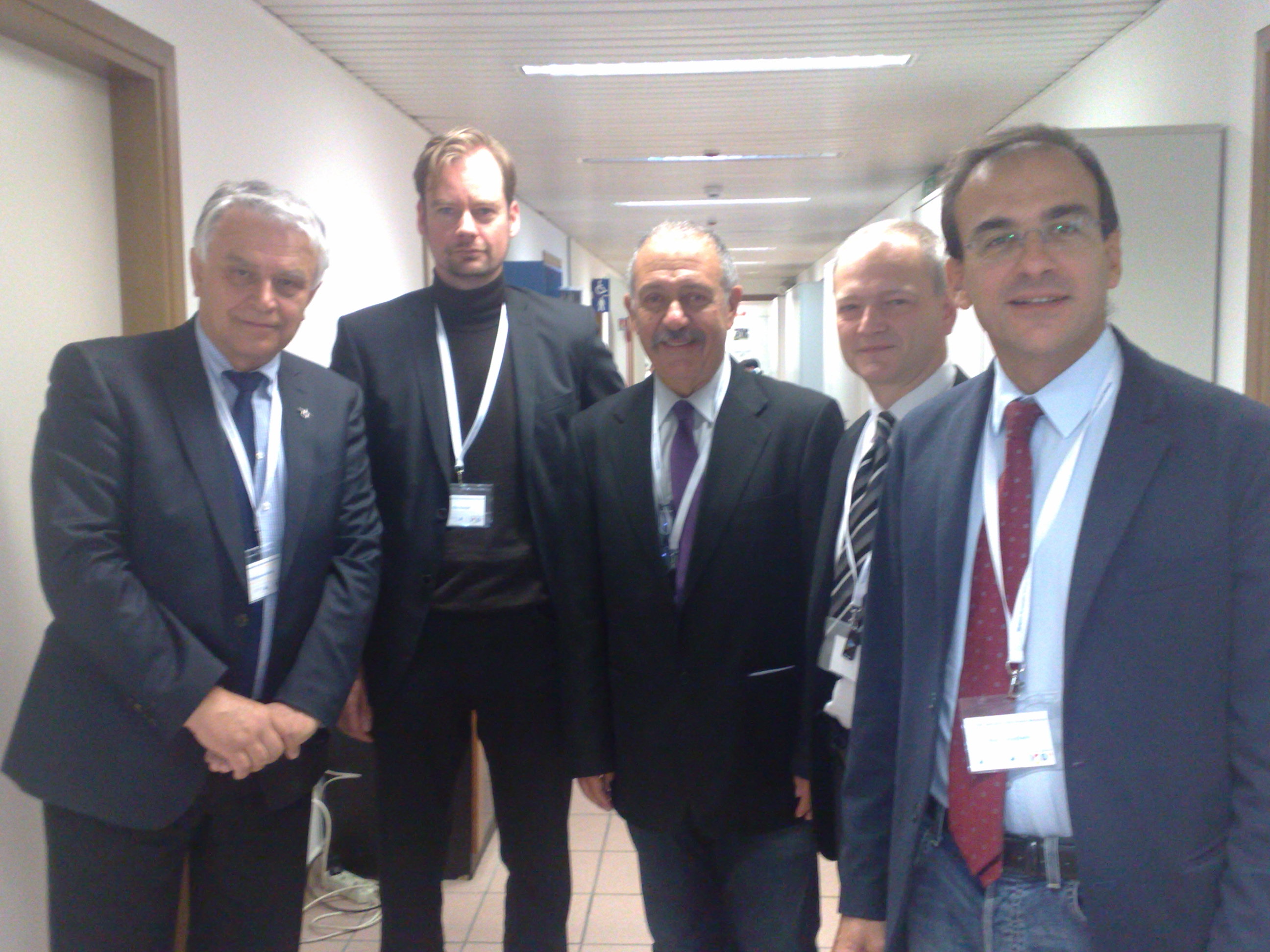
4th EASN General Assembly
 The 4th General Assembly of the European Aeronautics Science Network was carried out on October 10, 2013 during the 3rd EASN International Workshop on Aerostructures in Milan. The EASN General Assembly, in the course of which a plethora of important issues were presented and discussed, was attended by 48 EASN members. During the General Assembly, a review of the EASN Association's main activities, achievements as well as a financial synopsis of the year 2013 took place. Additionally, numerous proposed actions, objectives and priorities for the next period were presented by the EASN Chairman, Prof. Spiros Pantelakis, and approved by the participants. Last but not least, during the 4th General Assembly of the Association, the election of the new Board of Directors (BoD) also took place.
The 4th General Assembly of the European Aeronautics Science Network was carried out on October 10, 2013 during the 3rd EASN International Workshop on Aerostructures in Milan. The EASN General Assembly, in the course of which a plethora of important issues were presented and discussed, was attended by 48 EASN members. During the General Assembly, a review of the EASN Association's main activities, achievements as well as a financial synopsis of the year 2013 took place. Additionally, numerous proposed actions, objectives and priorities for the next period were presented by the EASN Chairman, Prof. Spiros Pantelakis, and approved by the participants. Last but not least, during the 4th General Assembly of the Association, the election of the new Board of Directors (BoD) also took place.
ACARE WG1
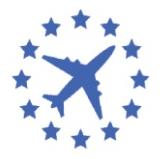 EASN has delegated experts into the Advisory Council for Aeronautics Research in Europe (ACARE). ACARE is a joint initiative of 25 European states for improving the competitive situation of Europe in aviation. The relevant aviation research and innovation activities were described in the Strategic Research and Innovation Agenda (SRIA) containing recommendations for the decision-makers in the European Parliament, the European Commission as well as for the member states with respect to priorities of aviation research for the next decennia.
EASN has delegated experts into the Advisory Council for Aeronautics Research in Europe (ACARE). ACARE is a joint initiative of 25 European states for improving the competitive situation of Europe in aviation. The relevant aviation research and innovation activities were described in the Strategic Research and Innovation Agenda (SRIA) containing recommendations for the decision-makers in the European Parliament, the European Commission as well as for the member states with respect to priorities of aviation research for the next decennia.
Working Group 1 is concerned with "Meeting Societal and Market Needs". The respective Flightpath 2050 document has identified 5 major goals: 1) Europeans make informed mobility choices enabling affordable access to one another 2) 90% of travellers within Europe are able travelling door-to-door within 4 hours, using different transport modes 3) Flights arrive within 1 minute of the planned arrival time regardless of weather conditions. 4) An air traffic management system handles at least 25 million flights a year and 5) A coherent ground infrastructure is developed for servicing and other connecting facilities.
After providing both volumes of the Strategic Research and Innovation Agenda, the WG1 has decided to proceed with their work on a continuous base. The target is to follow-up the implementation of the ACARE goals at European and partially also at national level. The group follows-up the developments with respect to Horizon 2020 accordingly. Furthermore, it is important to establish or support related Coordination and Supporting Actions (CSA) that monitor the progress of the achievements of the ACARE goals. One of those projects is the CATER project (Coordinating Air transport Time Efficiency Research) where EASN is also a consortium partner. This CSA (Coordination and Supporting Action) investigates the implementation of the ACARE goals for the research coordination on Time Efficiency in air transport systems. For more information, please visit www.acare4europe.org.
Observatory Platform Technological and Institutional (OPTI)
 The FP7 OPTI project (Observatory Platform Technological and Institutional - Observation platform to assess the fulfilment of Vision 2020 goals from technological and institutional standpoints) has evaluated the achievements towards the targets in aeronautical research that are set by the ACARE 2020 goals. For this purpose, technical goals and institutional enablers were identified and analysed to provide the European Commission and other stakeholders with the most recent information on the progress with respect to the achievements.
The FP7 OPTI project (Observatory Platform Technological and Institutional - Observation platform to assess the fulfilment of Vision 2020 goals from technological and institutional standpoints) has evaluated the achievements towards the targets in aeronautical research that are set by the ACARE 2020 goals. For this purpose, technical goals and institutional enablers were identified and analysed to provide the European Commission and other stakeholders with the most recent information on the progress with respect to the achievements.
The final report was provided recently and it is used by the European Commission to set the priorities for the next research programmes on aeronautics. EASN was represented in OPTI as member of the Advisory Board and Work Group leader for the ACARE 2020 goal "Quality and Affordability". External website link for more information: OPTI on CORDIS.

 Having completed its first year, the IASS activities are in their majority well on track while most of the first year's objectives have been successfully achieved. During the first year, IASS mainly focused on: i) the screening of potential materials and reactions to formulate a multifunctional composite, and ii) the further screening of the potential reactions to integrate the self-healing function in the epoxy composites. In particular, new formulations for the epoxy matrix based on new hardeners and new components have been developed. Carbon nanostructured forms embedded in the developed formulation has allowed the manufacturing of multifunctional coupons. Very promising results have been obtained in terms of flame resistance and electrical conductivity. For more information visit the IASS project website:
Having completed its first year, the IASS activities are in their majority well on track while most of the first year's objectives have been successfully achieved. During the first year, IASS mainly focused on: i) the screening of potential materials and reactions to formulate a multifunctional composite, and ii) the further screening of the potential reactions to integrate the self-healing function in the epoxy composites. In particular, new formulations for the epoxy matrix based on new hardeners and new components have been developed. Carbon nanostructured forms embedded in the developed formulation has allowed the manufacturing of multifunctional coupons. Very promising results have been obtained in terms of flame resistance and electrical conductivity. For more information visit the IASS project website: 
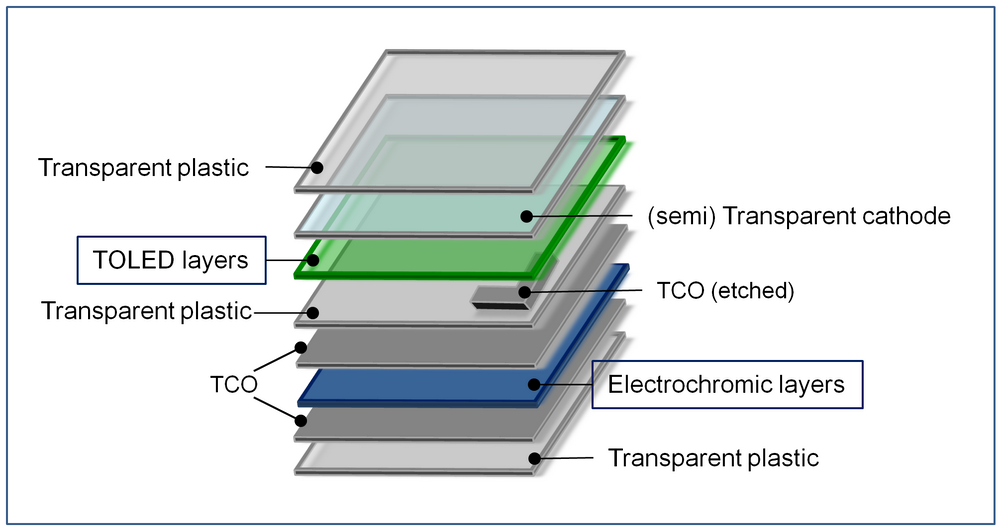
 The INMA project delivered means and methods to cold and hot form titanium by incremental forming. This was supported by process numerical models, a tool path correction algorithm and post-forming material data. The project comes in its final stage and the activity is focused on demonstration. The fabrication sequence by cold forming of an engine demonstrator is almost completed and the part testing and evaluation is going to be made. The fabrication of the airframe demonstrator is being launched using hot forming under a homogeneous and controlled temperature. An overview of the project was presented during the 3rd EASN Workshop on Aerostructures held on October 9th-11th in Milan. For more information visit the INMA project website:
The INMA project delivered means and methods to cold and hot form titanium by incremental forming. This was supported by process numerical models, a tool path correction algorithm and post-forming material data. The project comes in its final stage and the activity is focused on demonstration. The fabrication sequence by cold forming of an engine demonstrator is almost completed and the part testing and evaluation is going to be made. The fabrication of the airframe demonstrator is being launched using hot forming under a homogeneous and controlled temperature. An overview of the project was presented during the 3rd EASN Workshop on Aerostructures held on October 9th-11th in Milan. For more information visit the INMA project website:  Preliminary results of the third NDT development campaign are now available for detection of hydraulic fluid on CFRP, thermal degradation, and weak bonds caused by poor curing. Several extended NDT methods could detect these factors and provide information on the contamination levels. The mechanical strength (GIC) was not markedly reduced by the selected pre-bond hydraulic fluid contaminations. Thermal treatment of CFRP was found to adversely affect adhesive bond strength only >210 degrees Celsius. Also, curing temperatures as low as 150 degrees Celsius did not reduce the mode
Preliminary results of the third NDT development campaign are now available for detection of hydraulic fluid on CFRP, thermal degradation, and weak bonds caused by poor curing. Several extended NDT methods could detect these factors and provide information on the contamination levels. The mechanical strength (GIC) was not markedly reduced by the selected pre-bond hydraulic fluid contaminations. Thermal treatment of CFRP was found to adversely affect adhesive bond strength only >210 degrees Celsius. Also, curing temperatures as low as 150 degrees Celsius did not reduce the mode  After the Kick of Meeting, on June 24th, 2013, CORSAIR is defining the components and materials to be considered, with special regards to the requirements of aeronautic companies. The different procedures and protocols for characterizing coatings and repairs are also being explored. In the end a roadmap and selection of materials and components will be drawn. The next tasks will be aimed at developing a multiscale process simulation as well as at the design of innovative and customized nozzle for optimizing the deposition processes to repair light alloys (Al, Mg, Ti) components. The outcomes will provide a foundation for the entire project research. Activities starting later in the year will receive input from these critical studies. For more information on the CORSAIR project, please visit
After the Kick of Meeting, on June 24th, 2013, CORSAIR is defining the components and materials to be considered, with special regards to the requirements of aeronautic companies. The different procedures and protocols for characterizing coatings and repairs are also being explored. In the end a roadmap and selection of materials and components will be drawn. The next tasks will be aimed at developing a multiscale process simulation as well as at the design of innovative and customized nozzle for optimizing the deposition processes to repair light alloys (Al, Mg, Ti) components. The outcomes will provide a foundation for the entire project research. Activities starting later in the year will receive input from these critical studies. For more information on the CORSAIR project, please visit  The i-VISION project, officially launched during a two-day Kick-Off Meeting on September, in Athens, Greece, aims at supporting human factors design and validation activities in aircraft cockpits, during the early phases of the product life-cycle through knowledge-based immersive virtual reality technologies. i-VISION, through a unique combination of research in the areas of human factors, semantics and virtual design, will enable designers and engineers to visualize, manipulate and interact with the digital mock up in an intelligent manner allowing for decisions to be taken very early in the design process and thus helping to reduce costly errors. For more information visit the i-VISION project website:
The i-VISION project, officially launched during a two-day Kick-Off Meeting on September, in Athens, Greece, aims at supporting human factors design and validation activities in aircraft cockpits, during the early phases of the product life-cycle through knowledge-based immersive virtual reality technologies. i-VISION, through a unique combination of research in the areas of human factors, semantics and virtual design, will enable designers and engineers to visualize, manipulate and interact with the digital mock up in an intelligent manner allowing for decisions to be taken very early in the design process and thus helping to reduce costly errors. For more information visit the i-VISION project website: 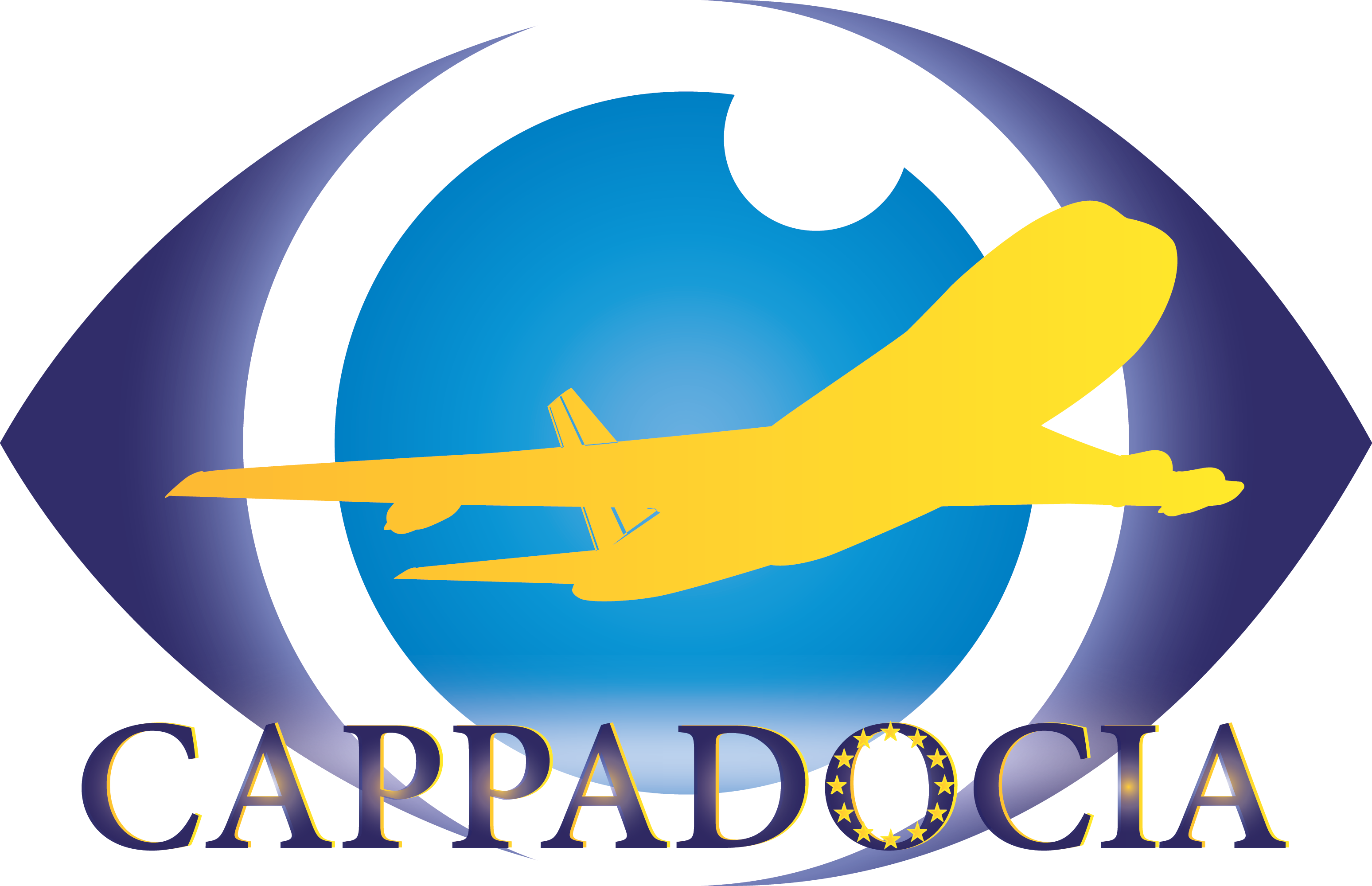 CAPPADOCIA (Coordination Action Pro "Production, Avionics, Design" On Cost-efficiency in Aeronautics), coordinated by Efficient Innovation (France), was officially launched during the two-day Kick-off Meeting held on October 21st - 22nd 2013, in Toulouse (France). The event was respectively hosted by local partners, Airbus and Aerospace Valley. CAPPADOCIA is a 4 years Coordination and Support Action of the last FP7 call which focuses on research activities contributing to the achievements of the SRIA goal of cost efficiency. CAPPADOCIA will assess past, ongoing and future EC-funded projects related with cost efficiency in Aeronautics and Air Transport. Thus, it will identify scientific gaps and bottlenecks to innovation within the targeted research landscape and accordingly formulate strategic recommendations towards targeted stakeholders, such as ACARE.
CAPPADOCIA (Coordination Action Pro "Production, Avionics, Design" On Cost-efficiency in Aeronautics), coordinated by Efficient Innovation (France), was officially launched during the two-day Kick-off Meeting held on October 21st - 22nd 2013, in Toulouse (France). The event was respectively hosted by local partners, Airbus and Aerospace Valley. CAPPADOCIA is a 4 years Coordination and Support Action of the last FP7 call which focuses on research activities contributing to the achievements of the SRIA goal of cost efficiency. CAPPADOCIA will assess past, ongoing and future EC-funded projects related with cost efficiency in Aeronautics and Air Transport. Thus, it will identify scientific gaps and bottlenecks to innovation within the targeted research landscape and accordingly formulate strategic recommendations towards targeted stakeholders, such as ACARE. In an attempt to motivate and raise the interest of young Europeans in scientific studies and careers related to aeronautics and air transport, Promo-Air project, intends to organize a pan-European event,
In an attempt to motivate and raise the interest of young Europeans in scientific studies and careers related to aeronautics and air transport, Promo-Air project, intends to organize a pan-European event, 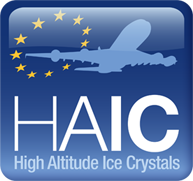 The HAIC Consortium conducted successfully the 1st Annual Review Meeting on the 25th and 26th of September 2013 in Toulouse, France. The usually very difficult launch and ramp-up phase of such a large project has been completed successfully. HAIC is now well on track and achieved most of its 1st year objectives. High in the list of priorities for the coming months is the preparation and implementation of the International HAIC/High Ice Water Content (HIWC) field campaign at Darwin, planned in the first quarter of 2014. The purpose of the field campaign is to collect cloud data in deep convective clouds in order to develop the first modern extensive data set of the core and non-core areas of tropical oceanic deep convection and less vigorous tropical continental convection. This data set will be a unique resource for fundamental research, new industrial developments of detection and/or awareness technologies and for the regulation makers to assess the icing envelope for glaciated icing conditions. For more information visit the HAIC project website:
The HAIC Consortium conducted successfully the 1st Annual Review Meeting on the 25th and 26th of September 2013 in Toulouse, France. The usually very difficult launch and ramp-up phase of such a large project has been completed successfully. HAIC is now well on track and achieved most of its 1st year objectives. High in the list of priorities for the coming months is the preparation and implementation of the International HAIC/High Ice Water Content (HIWC) field campaign at Darwin, planned in the first quarter of 2014. The purpose of the field campaign is to collect cloud data in deep convective clouds in order to develop the first modern extensive data set of the core and non-core areas of tropical oceanic deep convection and less vigorous tropical continental convection. This data set will be a unique resource for fundamental research, new industrial developments of detection and/or awareness technologies and for the regulation makers to assess the icing envelope for glaciated icing conditions. For more information visit the HAIC project website: 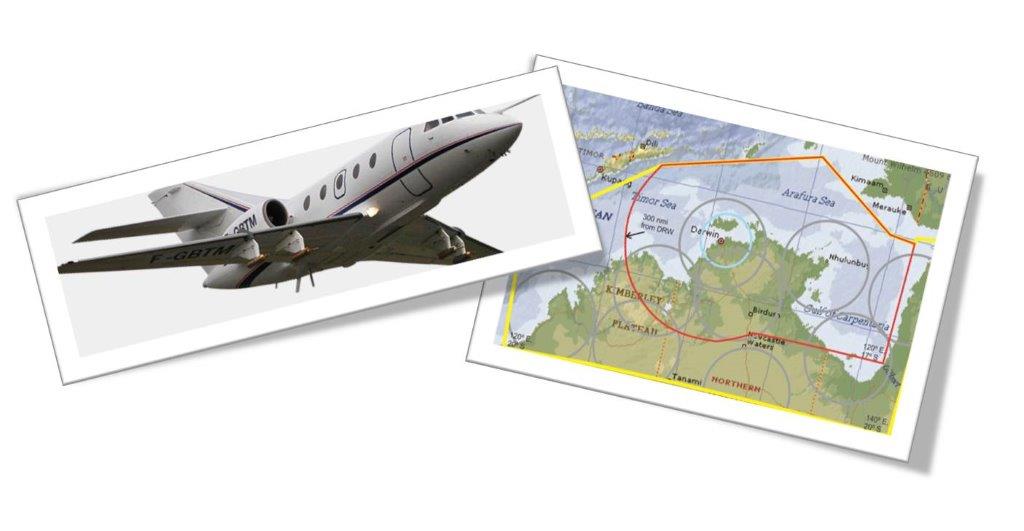
 CATER, which stands for "Coordinating Air transport Time Efficiency Research", held its Kick-off Meeting on October 7th 2013 at the European Commission's buildings in Brussels, Belgium. The event was successfully coordinated by SESM. CATER is a Coordination and Support Action in Air Transport Systems within the Seventh Framework Programme. As indicated by its title, the project deals with the topic of time efficiency and primarily aims at acting as a R&I observatory and policy center whereby air transport time efficiency stakeholders can be provided with a panoramic view of what research and innovation is being conducted, of existing gaps in the landscape as well as of how EU (and non EU) funded research projects meet ACARE goals according with SRIA needs. Accordingly, CATER will deliver insightful reports and recommendations packaged and disseminated effectively.
CATER, which stands for "Coordinating Air transport Time Efficiency Research", held its Kick-off Meeting on October 7th 2013 at the European Commission's buildings in Brussels, Belgium. The event was successfully coordinated by SESM. CATER is a Coordination and Support Action in Air Transport Systems within the Seventh Framework Programme. As indicated by its title, the project deals with the topic of time efficiency and primarily aims at acting as a R&I observatory and policy center whereby air transport time efficiency stakeholders can be provided with a panoramic view of what research and innovation is being conducted, of existing gaps in the landscape as well as of how EU (and non EU) funded research projects meet ACARE goals according with SRIA needs. Accordingly, CATER will deliver insightful reports and recommendations packaged and disseminated effectively. Having completed its second year, SARISTU held its Mid-Term Review Meeting from the 24th to the 26th of September 2013 in Naples, Italy. During the three day meeting, the very positive progress performed within all Scenarios was presented and received enthusiastically by participants, independent assessors and the European Commission. Amongst others a Trailing Edge dummy with all the active devices including new kinematics, actuator, skin etc. and a fuselage panel including 2 types of sensor network for damage detection were shown. Overall the project progress is largely in line with expectations, with most of the objectives having been successfully achieved. For more information visit the SARISTU project website:
Having completed its second year, SARISTU held its Mid-Term Review Meeting from the 24th to the 26th of September 2013 in Naples, Italy. During the three day meeting, the very positive progress performed within all Scenarios was presented and received enthusiastically by participants, independent assessors and the European Commission. Amongst others a Trailing Edge dummy with all the active devices including new kinematics, actuator, skin etc. and a fuselage panel including 2 types of sensor network for damage detection were shown. Overall the project progress is largely in line with expectations, with most of the objectives having been successfully achieved. For more information visit the SARISTU project website: 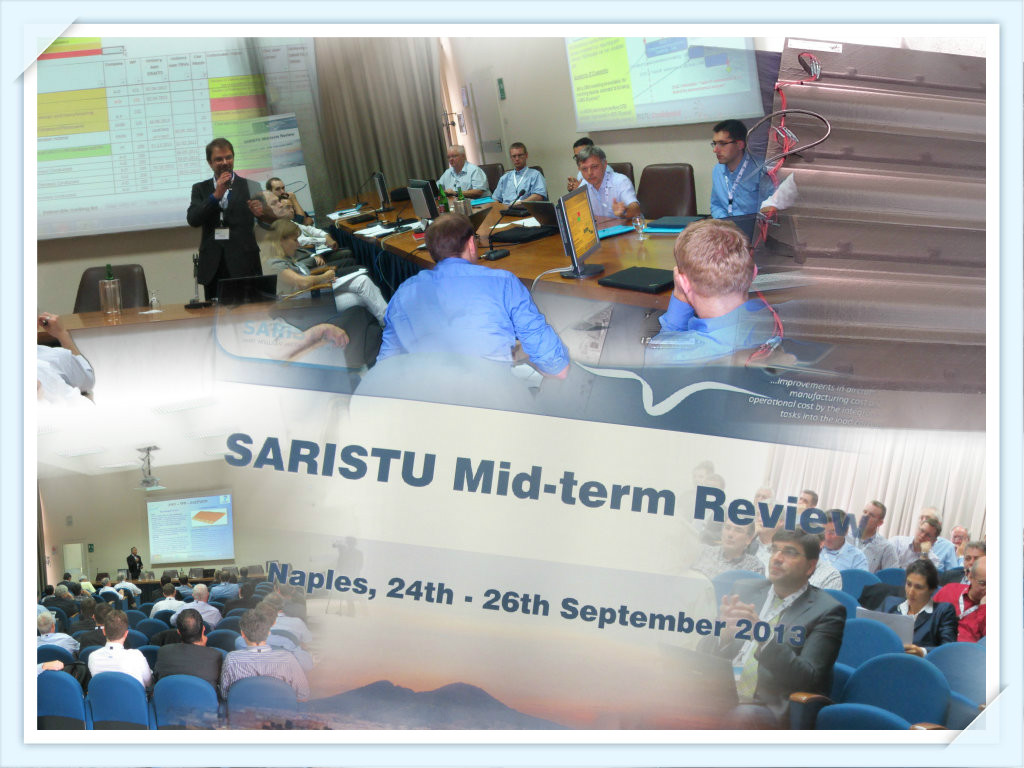
 In the first half year of the HIKARI project, all the activities are well on track having already achieved its internally set goals. The work has been focused on comparing the various vehicle concepts in their technical definition and flight and ground operations. Along with ensuring the market viability of the High Speed Transport (HST) concept, different scenarios of flight profiles, which will lead to a fuel choice comparison, have been defined in order to forecast the possible impact of HST on the environment. Finally, a HIKARI Workshop that will be opened for external entities will be held in Japan the first half of 2014. For more information visit the HIKARI project website:
In the first half year of the HIKARI project, all the activities are well on track having already achieved its internally set goals. The work has been focused on comparing the various vehicle concepts in their technical definition and flight and ground operations. Along with ensuring the market viability of the High Speed Transport (HST) concept, different scenarios of flight profiles, which will lead to a fuel choice comparison, have been defined in order to forecast the possible impact of HST on the environment. Finally, a HIKARI Workshop that will be opened for external entities will be held in Japan the first half of 2014. For more information visit the HIKARI project website: The Promo-Air project carried out its 6-month progress meeting, in Budapest, Hungary. Following the preliminary work performed, the 20 most promising projects of the FP7 have been selected on the basis of having the potential to catch the interest of high-school students. During this event, the partners had the opportunity to decide upon fruitful guidelines mainly for the visualization of educational material and the project's communication strategy, in order to effectively raise the interest of young Europeans in aeronautics related careers. Finally initial thoughts were expressed concerning the upcoming workshop where educational aspects will be discussed by representatives from the aeronautical sector. For more information visit the Promo-Air project website:
The Promo-Air project carried out its 6-month progress meeting, in Budapest, Hungary. Following the preliminary work performed, the 20 most promising projects of the FP7 have been selected on the basis of having the potential to catch the interest of high-school students. During this event, the partners had the opportunity to decide upon fruitful guidelines mainly for the visualization of educational material and the project's communication strategy, in order to effectively raise the interest of young Europeans in aeronautics related careers. Finally initial thoughts were expressed concerning the upcoming workshop where educational aspects will be discussed by representatives from the aeronautical sector. For more information visit the Promo-Air project website: 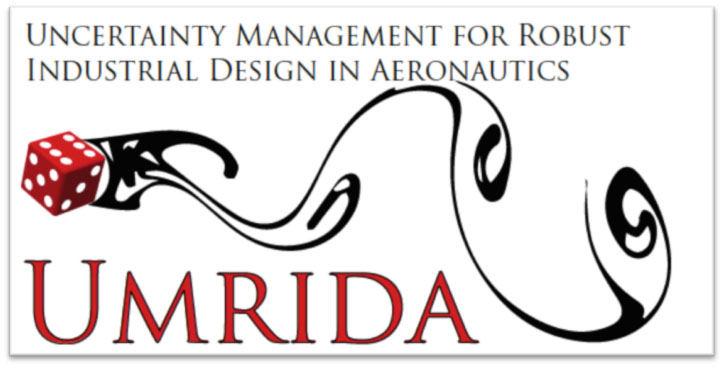 The UMRIDA project (Uncertainty Management for Robust Industrial Design in Aeronautics) on Uncertainty Quantification (UQ) and Robust Design Methods (RDM) aims at a paradigm shift in virtual prototyping away from deterministic design and towards a design under uncertainties, providing not only a mean result but a domain of confidence for a given design quantity. Uncertainties in the design process are manifold; from varying operational conditions to geometrical uncertainties due to manufacturing tolerances, assembly or shape modifications during operation (thermal stresses, erosion or fouling). Accounting for these uncertainties in the design process allows for better performing and safer aircraft components over the entire component life time. The fields of applications are as various as the 22 project partners spanning over all fields of the aeronautics sector.
The UMRIDA project (Uncertainty Management for Robust Industrial Design in Aeronautics) on Uncertainty Quantification (UQ) and Robust Design Methods (RDM) aims at a paradigm shift in virtual prototyping away from deterministic design and towards a design under uncertainties, providing not only a mean result but a domain of confidence for a given design quantity. Uncertainties in the design process are manifold; from varying operational conditions to geometrical uncertainties due to manufacturing tolerances, assembly or shape modifications during operation (thermal stresses, erosion or fouling). Accounting for these uncertainties in the design process allows for better performing and safer aircraft components over the entire component life time. The fields of applications are as various as the 22 project partners spanning over all fields of the aeronautics sector.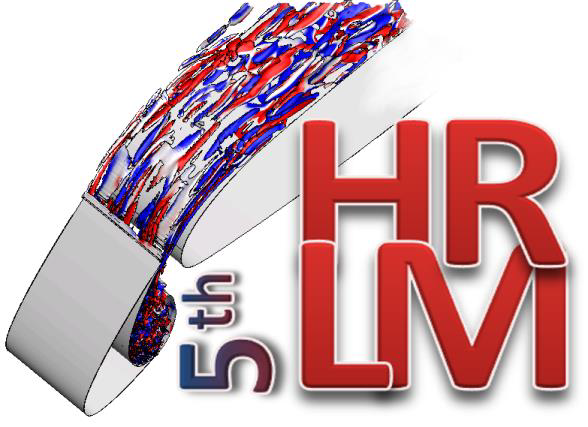 The 5th Symposium on Hybrid RANS-LES Methods will take place on 19-21 March 2014, Texas, USA. The Symposium is dedicated to reporting and discussing recent achievements in development and applications of hybrid RANS-LES and other advanced turbulence modelling approaches. The deadline for submission of a short abstract is on 25 November 2013. For a delay of submission, please get contact with the Symposium organizers. For more information, please visit
The 5th Symposium on Hybrid RANS-LES Methods will take place on 19-21 March 2014, Texas, USA. The Symposium is dedicated to reporting and discussing recent achievements in development and applications of hybrid RANS-LES and other advanced turbulence modelling approaches. The deadline for submission of a short abstract is on 25 November 2013. For a delay of submission, please get contact with the Symposium organizers. For more information, please visit  The XVII International Colloquium on Mechanical Fatigue of Metals will be taking place on June 25th-27th 2014 in Verbania, on the western shore of Lake Maggiore (Italy). ICMFM17 is aimed at fostering and strengthening cooperation and research in the field of metal fatigue, looking at the problem both from a microscopic scale and from an applicative and fatigue design point of view. For more information:
The XVII International Colloquium on Mechanical Fatigue of Metals will be taking place on June 25th-27th 2014 in Verbania, on the western shore of Lake Maggiore (Italy). ICMFM17 is aimed at fostering and strengthening cooperation and research in the field of metal fatigue, looking at the problem both from a microscopic scale and from an applicative and fatigue design point of view. For more information: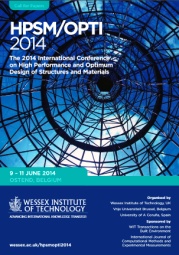 The 2014 International Conference on High Performance and Optimum Design of Structures and Materials will take place on June 9-11 in Ostend, Belgium and it is a new edition of a series of conferences started in 1989. This scientific event addresses issues involving novel types of structures, new generation materials and design methods as structural and multidisciplinary optimization. The meeting will welcome contributions dealing with theoretical advances as well as solutions of industrial problems. Learn more
The 2014 International Conference on High Performance and Optimum Design of Structures and Materials will take place on June 9-11 in Ostend, Belgium and it is a new edition of a series of conferences started in 1989. This scientific event addresses issues involving novel types of structures, new generation materials and design methods as structural and multidisciplinary optimization. The meeting will welcome contributions dealing with theoretical advances as well as solutions of industrial problems. Learn more 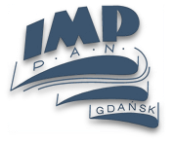 The department is offering Structural Health Monitoring and Non Destructive Testing techniques based on: elastic wave propagation, 3D laser scanning vibrometry, Fiber Bragg Gratings sensors, electromechanical impedance, terahertz spectroscopy and active thermography. For more information, visit the
The department is offering Structural Health Monitoring and Non Destructive Testing techniques based on: elastic wave propagation, 3D laser scanning vibrometry, Fiber Bragg Gratings sensors, electromechanical impedance, terahertz spectroscopy and active thermography. For more information, visit the 

